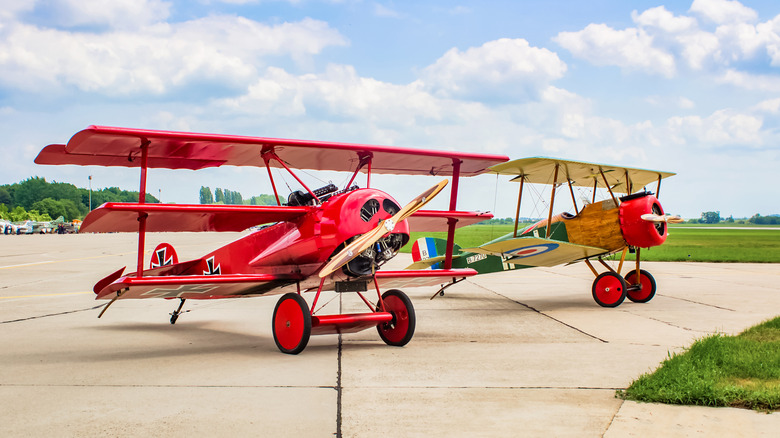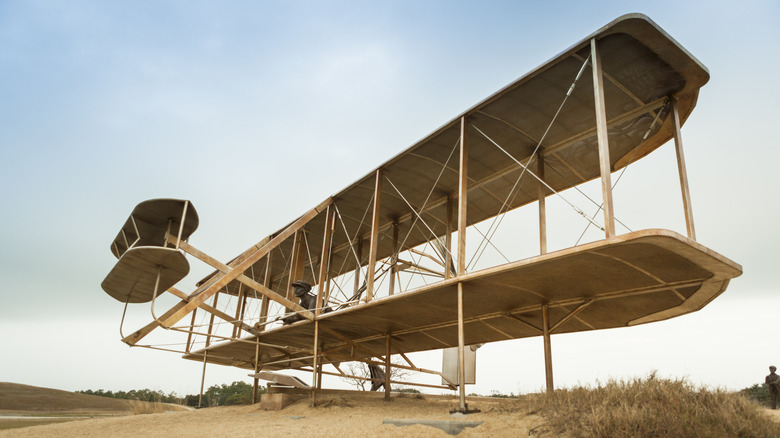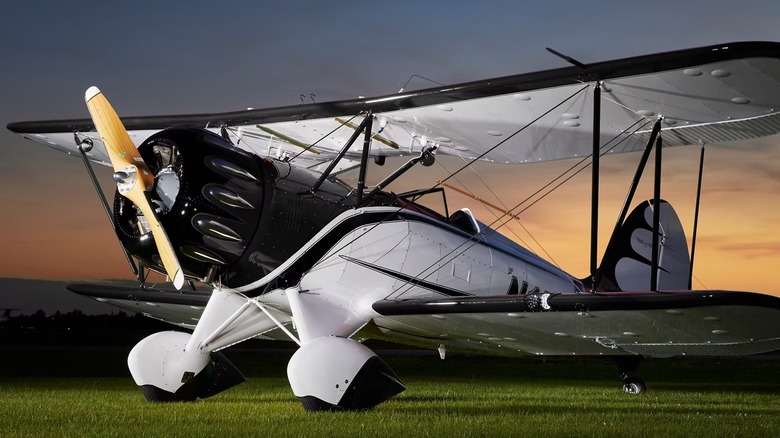Why Did The World Stop Building Biplanes?
For a decent chunk of aviation history, biplanes were everywhere, whether it was dogfights, training flights, or stunt shows. But then, suddenly, they weren't. To see what changed, we'll have to turn the clock back a bit. Biplanes had some real advantages in the early years. They offered more lift from shorter wings, low stall speeds, and great low-speed handling. These characteristics even made planes like the Soviet Antonov AN-2 suitable for agriculture. But as aircraft design matured, those same features started holding them back. The drag from that second wing — and all the struts and wires holding it in place — meant biplanes had poor fuel efficiency.
Overall, monoplanes offered better speed and consumed less fuel since they did away with the excess that affected aerodynamics. Additionally, as engines got stronger (especially with the dawn of jet engines) and materials improved, monoplanes also grew a lot stronger structurally. On top of that, they provided pilots with better visibility, which was huge in combat. Yes, despite their open cockpits, biplanes generally offered poorer visibility because their lower wing obstructed the pilot's view downwards and to the side. All these factors led to a major shift in the industry by the late 1930s. Biplanes simply couldn't match the performance, speed, or fuel economy needed in the new era of flight.
Why early planes needed the strength of two wings
The Wright Flyer, the world's first successful powered aircraft, was a biplane — and it wasn't by accident. Back in 1903, when the Wright brothers made history, engines were weak, materials were fragile, and there wasn't much data to build on. The biplane layout compensated for these issues and gave the plane the lift and structural strength needed to get off the ground with minimal power and a lightweight frame. The layout also meant a lower wing loading, which refers to a larger wing area relative to a plane's weight. It contributed to easier takeoffs and landings and was crucial for the primitive airfields at the time.
Agility was another major advantage. The shorter wingspans gave them quicker roll rates, making them ideal for combat. That's why some of the top WWI fighters — like the Royal Aircraft Factory S.E.5, the Sopwith Camel, and the Albatros D.III — stuck with the biplane layout. Triplanes, like the Fokker Dr.I flown by the Red Baron, pushed it further by stacking three wings for even greater agility at low speeds. The design was so successful in dogfights that it sparked a short-lived increase in triplane production, specifically during World War I. They still quickly fell out of favor as the extra third wing created even more drag, and the structural complexity offered diminishing returns.
Who's still building and flying biplanes now
Biplanes may not be the default aircraft anymore, but they're still around — and still being made. Their use in military or commercial aviation has ended, but they've carved out a niche in aerobatics and leisure flying. So, any new models are mostly purpose-built for showmanship. Pilots appreciate their forgiving flight characteristics and the visceral flying experience that open cockpits provide.
One example is the Pitts Special, maintained and produced by Aviat Aircraft, which is designed for stunt pilots who rely on their agility and tight control. Then there's WACO Aircraft that still manufactures the YMF-5 — a handcrafted, open-cockpit biplane that combines classic style with modern avionics and safety systems. It's even available in an amphibious form. At the same time, vintage biplanes from the early and mid-20th century are lovingly restored and flown at airshows and private events. Companies like Lanitz Aviation in Germany even offer kits to construct biplanes like the Sherwood Ranger DS. These kits include all the main components needed to build the plane, such as the frame, wings, fabric covering, and hardware. This allows pilots/hobbyists to have a more hands-on experience.


